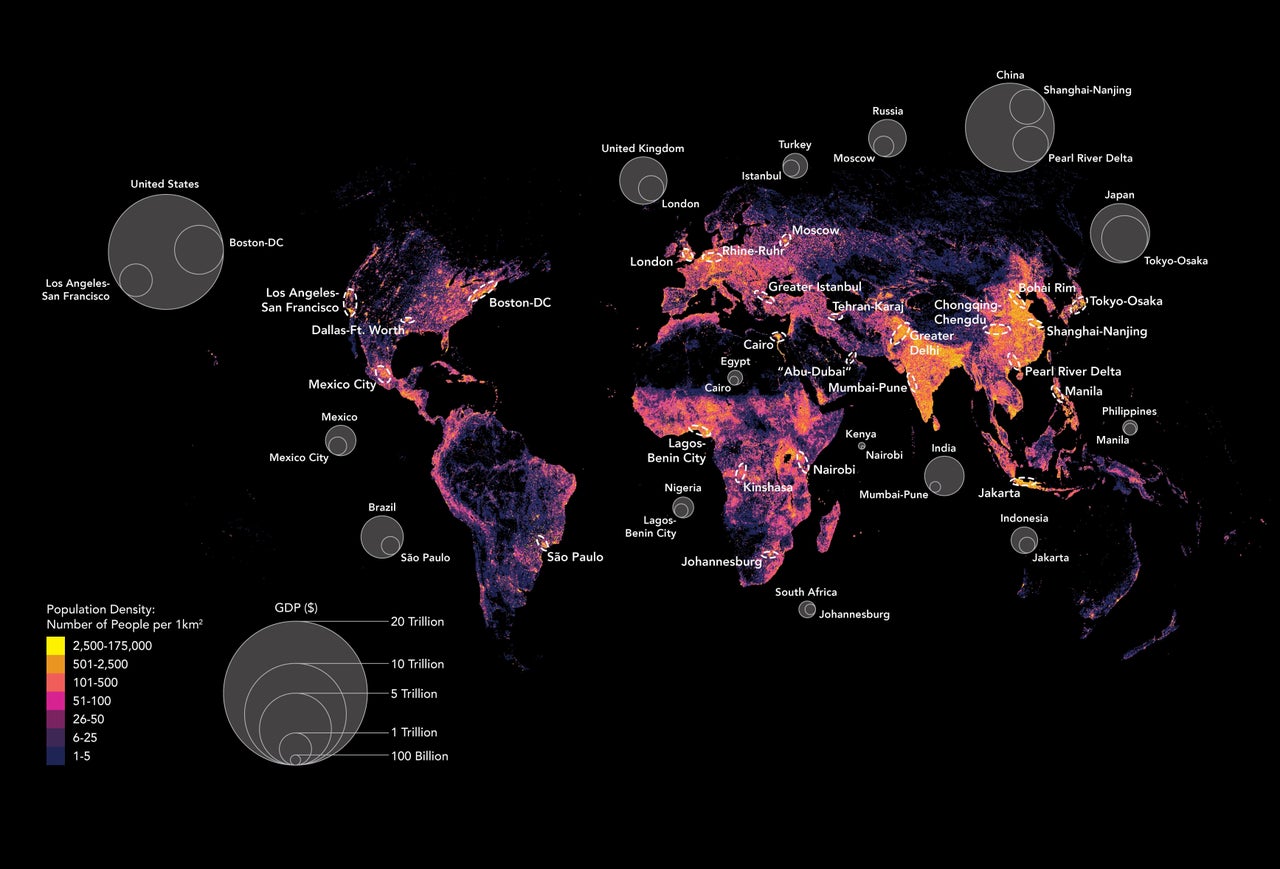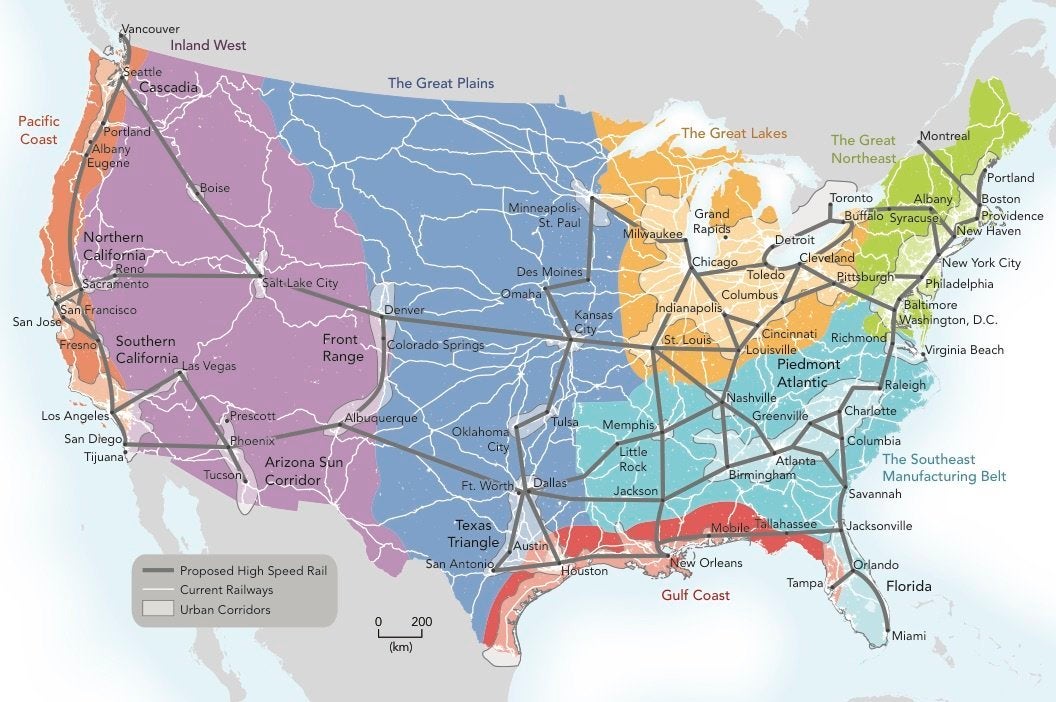The world’s population is moving into urban centers at a dizzying pace.
An estimated 66 percent of people will live in cities by 2050. And as the number of residents swell, urban boundaries will expand into the territory of other densely populated areas until entire regions coalesce into super-metropolises, author Parag Khanna posits in his new book Connectography.
Khanna calls these areas "megacities." While that term is usually used to describe individual cities with populations over 10 million -- of which there are dozens around the world, including New York, Mexico City, Beijing and Mumbai -- Khanna writes that megacities shouldn't just be defined by how many people they hold.
He sees future megacities not as individual entities but as clusters linked by advanced infrastructure systems. These clusters, he says, would be major drivers of economic growth.
“We should spend time building cities that are viable, connected and stable,” Khanna told The Huffington Post. "It's about improving livelihoods and infrastructure, and building a path to stability."
In Connectography, which was published in April, Khanna says 40 of these interconnected megacities will form in the next decade, with many concentrated in fast-growing regions in Asia.
In the map below, some of these potential megacities are marked by dotted lines. For instance, there's “Abu-Dubai,” a merging of the cities Abu Dhabi and Dubai in the United Arab Emirates. In Japan, there's “Tokyo-Osaka.”

In the U.S., a potential megacity in the Northeast would encompass Boston, New York City and Washington, D.C. It would boast a combined population of more than 50 million and would be responsible for a fifth of the country’s gross domestic product, Khanna says.
On the West Coast, a megacity cluster would be centered around Silicon Valley and could extend even to Los Angeles.
"These city-states matter far more than most American states," Khanna writes in his book, "and connectivity to these urban clusters determines Americans’ long-term economic viability far more than which state they reside in."
A key factor in the growth of these megacities will be extensive transit routes, in particular high-speed railways, says Khanna.
Super-fast trains already exist in many parts of Asia and Europe and can travel around 200 mph. The U.S. is still playing catch-up: There's a high-speed line that links cities in the Northeast and can reach speeds of 150 mph, and there's a high-speed rail project currently under construction in California, but it's been hit with delays and growing concerns about its budget.
A lot more can be done, Khanna says, like laying groundwork for more subways, rails and airports.
“There needs to be significant investments in infrastructure,” Khanna said.
Connectography identifies a number of other regions in the U.S. where high-speed railways might spur a shift toward megacities: in the Great Lakes region, with Chicago connecting to Detroit; in the Southeast, with Atlanta connecting to Raleigh and Nashville; in Texas, with the triangle of Dallas-Fort Worth, Houston and San Antonio.

Of course, infrastructure isn’t limited to physical routes and transit lines. It’s also about increasing people’s access to online services and information so they can communicate more easily.
“The better the bandwidth, the overall phone penetration, the WiFi hotspots, the better the city will be,” Khanna said. “I’m a huge believer in those.”
As megacities form and expand, however, inequality will also likely be exacerbated. They will attract top talent and hand them big paychecks. Housing will become less and less affordable. Income stratification will be unavoidable.
These things are already happening in expensive cities like New York and San Francisco, where calls for more affordable housing continue to grow while office rents hit stratospheric levels.
If Khanna's predictions about megacities become a reality, these issues would only become more pronounced.
“You can see so much violence, inequality, anti-gentrification movements and labor unrest,” Khanna said. “All of these are manifestations of large cities being places that empower people to earn more than they could in other places, but have significant inequality and stress.”
Correction: An earlier version of this story omitted San Antonio from the Texas Triangle.